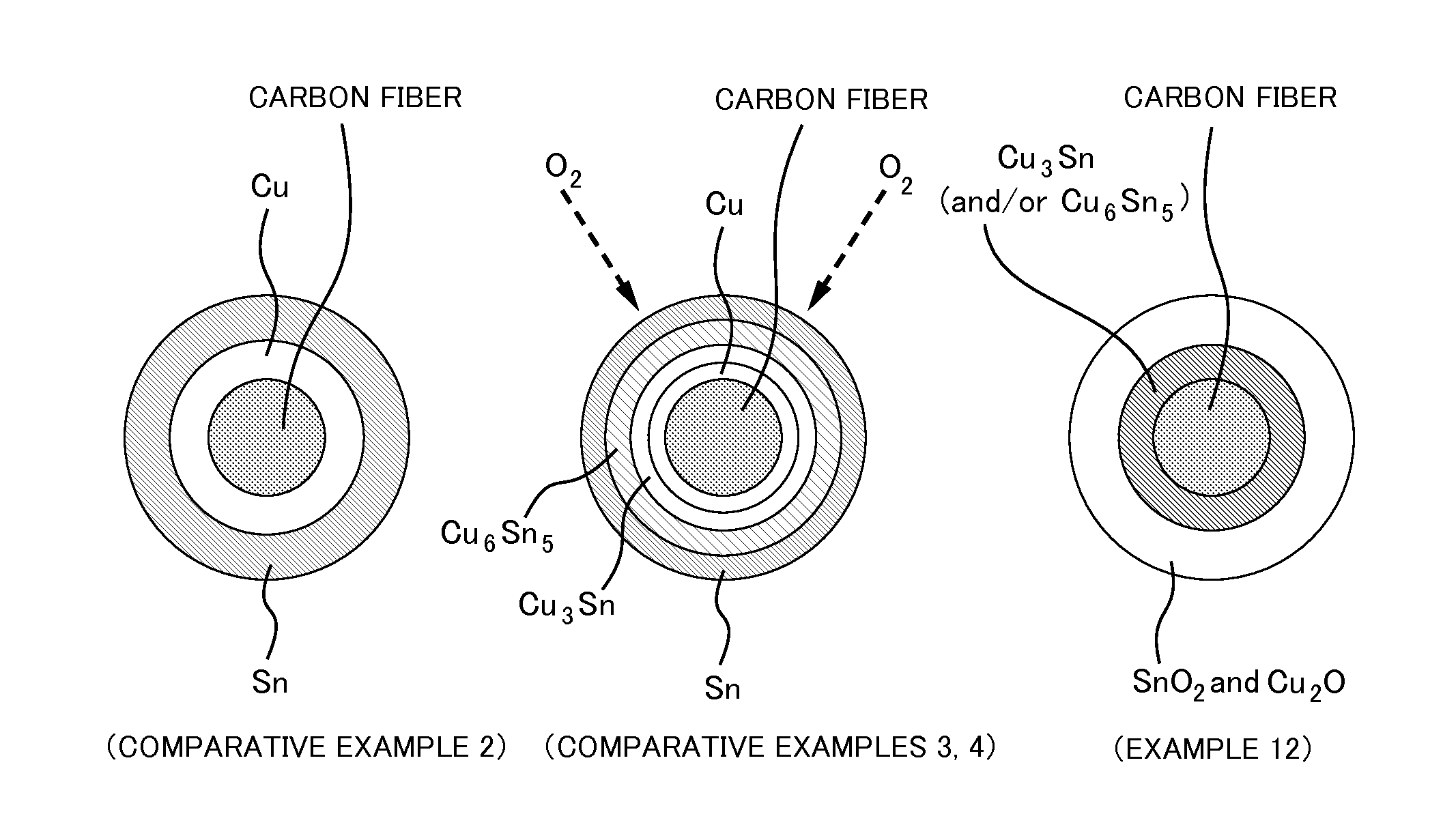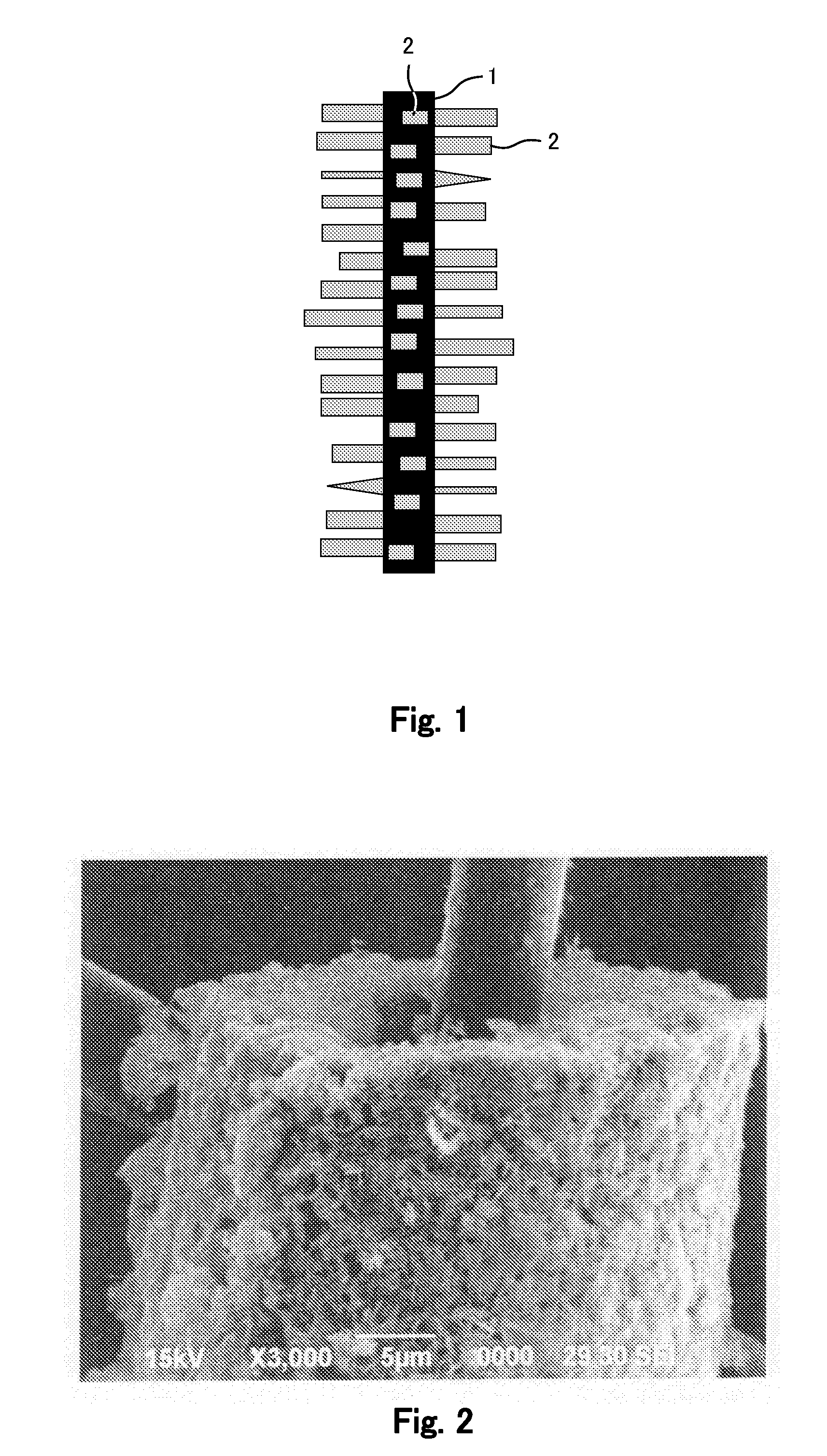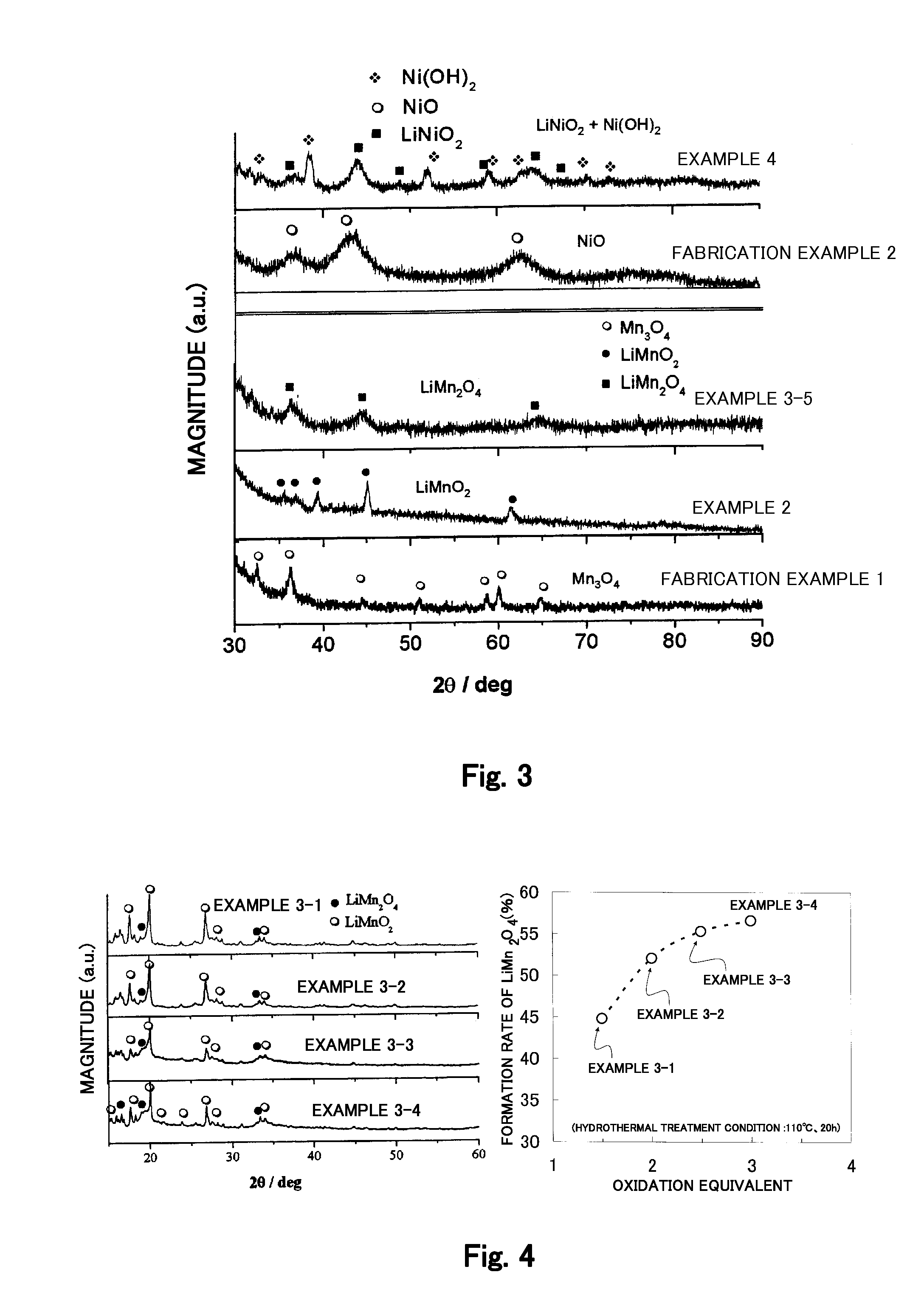Fiber Electrode for Lithium Secondary Battery, Fabrication Method Therefor, and Lithium Secondary Battery Including Fiber Electrode
a lithium secondary battery and fiber electrode technology, applied in the manufacture of final products, cell components, basic electric elements, etc., can solve the problems of poor reactivity of a mixture of manganese compound and lithium compound, high production cost, and large diameter
- Summary
- Abstract
- Description
- Claims
- Application Information
AI Technical Summary
Problems solved by technology
Method used
Image
Examples
fabrication example 1
Electrodeposition Method
Mn3O4 / Carbon Fiber
[0210]Here, an Mn(NO3)2 solution (0.3 mol / liter) was used for an electrodeposition bath; a carbon fiber (having a diameter of 6 μm) was used for an electrode acting as a working electrode; and a platinum foil was used for its counter electrode. Electrodeposition was performed under the condition of a constant current density of 50 mA / cm2 for 10 minutes. Thereafter, the electrode was washed with water and then dried under an air atmosphere at a temperature of 100° C. for 24 hours or longer. In this manner, the electrode of which the carbon fiber is coated with Mn3O4 was obtained. It should be noted that only being coated with Mn3O4 does not allow the electrode to function as a positive electrode. FIG. 2 shows an SEM photograph of the electrode in Fabrication Example 1.
fabrication example 2
Electrodeposition Method
NiO / Carbon Fiber
[0211]Here, an Ni(NO3)2 solution (0.3 mol / liter) was used for an electrodeposition bath; a carbon fiber (having a diameter of 6 μm) was used for an electrode acting as a working electrode; and a platinum foil was used for its counter electrode. Electrodeposition was performed under the condition of a constant current density of 50 mA / cm2 for 30 minutes. Thereafter, the electrode was washed with water and then dried under an air atmosphere at a temperature of 130° C. for 24 hours or longer. In this manner, the electrode of which the carbon fiber is coated with NiO was obtained. It should be noted that only being coated with NiO does not allow the electrode to function as a positive electrode.
fabrication example 3
Electrodeposition Method
Mn3O4+NiO / Carbon Fiber
[0212]In order to perform coating with Mn3O4 and NiO in an electrodeposition method, a mixture of Mn(NO3)2 solution (0.3 mol / liter) and Ni(NO3)2 solution (0.03 mol / liter) was used for an electrodeposition bath; a carbon fiber (having a diameter of 6 μm) was used for an electrode acting as a working electrode, and a platinum foil was used for its counter electrode. Electrodeposition was performed with a constant current density of 50 mA / cm2 for 30 minutes. Thereafter, the electrode was washed with water and then dried under an air atmosphere at a temperature of 130° C. for 24 hours or longer. In this manner, the electrode of which the carbon fiber is coated with Mn3O4 and NiO was obtained. It should be noted that only being coated with Mn3O4 and NiO does not allow the electrode to function as a positive electrode.
PUM
| Property | Measurement | Unit |
|---|---|---|
| temperature | aaaaa | aaaaa |
| thickness | aaaaa | aaaaa |
| diameter | aaaaa | aaaaa |
Abstract
Description
Claims
Application Information
 Login to view more
Login to view more - R&D Engineer
- R&D Manager
- IP Professional
- Industry Leading Data Capabilities
- Powerful AI technology
- Patent DNA Extraction
Browse by: Latest US Patents, China's latest patents, Technical Efficacy Thesaurus, Application Domain, Technology Topic.
© 2024 PatSnap. All rights reserved.Legal|Privacy policy|Modern Slavery Act Transparency Statement|Sitemap



